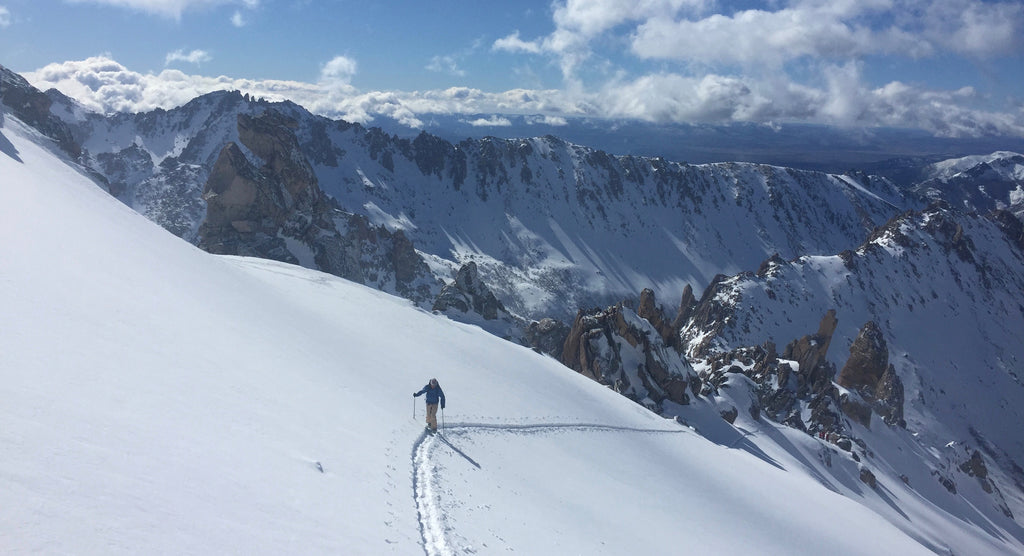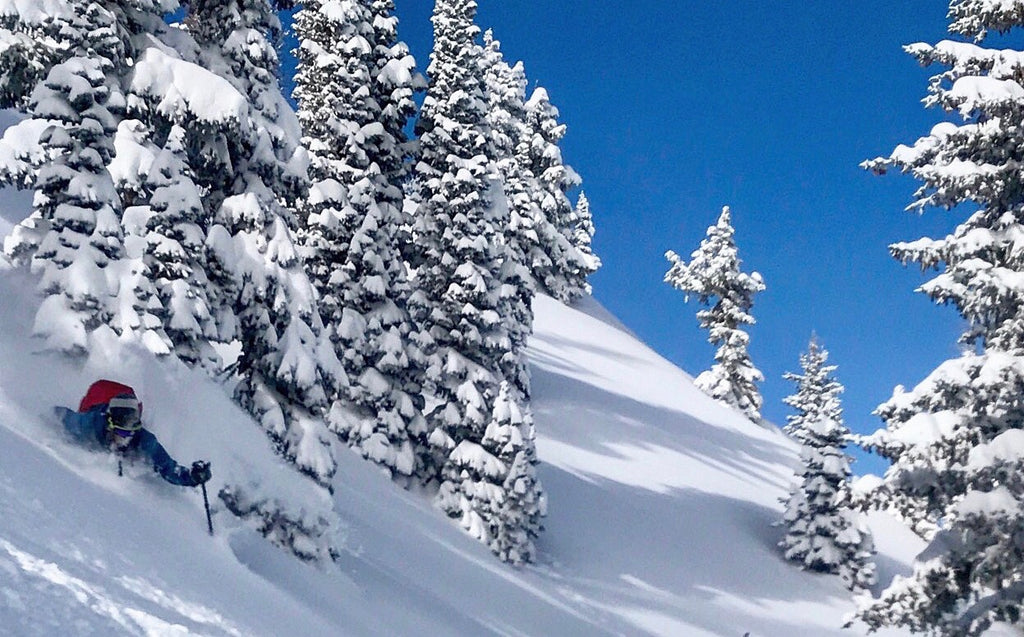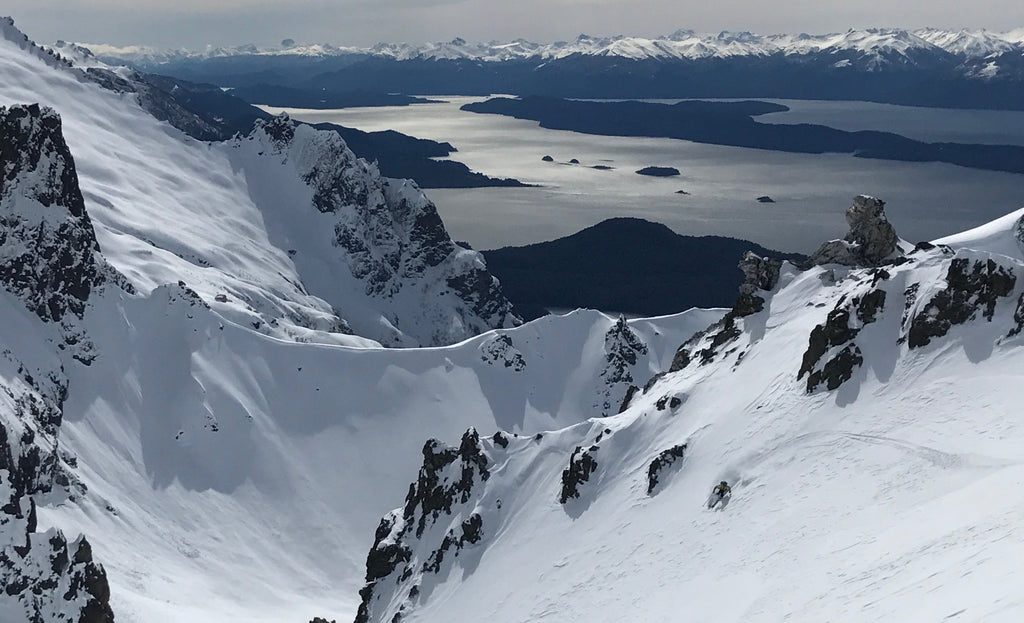We've done it backcountry skiers! From the hippy pow meadow skippers to the aggressive ski mountaineers, shredders worldwide are becoming believers in the power and reliability of efficient and lightweight ski touring gear. This in turn has lead to a massive influx of R&D money into this segment of the ski industry which is compounding the availability and rising quality of the gear. If you've been by the Vail Cripple Creek Backcountry store and chat with me about a light weight touring setup, or your first touring setup, you probably heard this- "Go as light as you can and still have the fun you were looking for." My time working for CCBC and testing gear has helped me to really dial in just where I like to save weight, and where I want a little extra beef. Distances, skiing style, snow conditions and terrain all play a factor in the decision of how light to go. Here is a bit of background on my own transition to lighter gear, and how I've based those decisions.
For a bit of my skiing background, I learned to ski in the steeps of Taos, NM, and enjoy skiing fast and aggressively with good but not perfect technique. I wound up Ski Patrolling at Vail prior to an injury and became hooked on large skis. I'm 6' 150 lbs and in good but nowhere near elite cardiovascular shape. I get my ass kicked by guys 20 years my senior in rando races. Like many, my first touring rig was Alpine Trekkers plugged in to an alpine setup. This "progessed" to Marker Dukes but I will focus on the setup I was on when I began working at Cripple Creek. My main setup and traveling weapon of choice was a pair of 186cm Volkl BMT 122s with Marker Kingpins. These were driven with Black Diamond Quadrant 4 buckle boots with Intuition Pro Tour liners and propelled uphill by Pomoca Pro S-Glide skins. This setup ripped. I was used to fat skis and skiing like a bat out of hell, and found what I was looking for at the time. I also had a pair of 177cm Fischer Hannibal 94s with a Speed Radical that I wasn't crazy about, but used for mountaineering missions.

The old setup was fun, but I could typically be found slogging at the back of the skin track like so.
Then came a fateful day in Gnarble, Utah on my first outing with the CCBC crew. The day before, CCBC owner Doug Stenclik, suggested I bring my powder skis. I replied that I didn't think that I could keep up in the BMTs and his response was, "No, the Fischers." I grabbed a pair of our Scarpa F1 demo boots and went for it. The next day we would shred over 5,000 vertical feet of some of the deepest low density blower I've ever skied, all before noon. I then understood what Doug meant by "powder skis". Days like that are rare- this was 2 feet of less than 5% water equivalent snow. You can ski that in nearly any gear. This day however gave me a great understanding of the power of shedding weight and gaining efficiency. I soon mounted up a pair of 185cm DPS Wailer 106s in the lightweight Tour1 construction with 150 gram Dynafit Superlite150 bindings and got my own pair of Scarpa F1 two buckle boots. A little more surface area in the ski for a wider variety of powder, and keeping the rest to a minimum. This shed almost 3 pounds per foot compared to the BMT setup, and a new way of looking at ski touring began to come to me. The argument against light weight gear is generally, "well, I'm in this for the downhill." We all are! Hop on board the weight watcher wagon and get more downhill or be more fresh for your coveted descent.

Trenching on said day, the 94 waisted powder skis, 2 buckle boots and pin bindings were perfect
Let's get in to the details. The first and best place to shed weight is the binding. Go tech, and go light tech. The Dynafit style tech bindings are remarkable in their weight to retention powers. Really consider just what you need in a binding. Do I need brakes- or can I learn to take my skin off with skis on? Do I need boot sole adjustability- or will I only ski one boot with this ski anyway? Do I need 3 levels of climbing aides- or is my new touring boot efficient enough with one or 2 positions? You can quickly shed up to a pound by going minimal with the binding. If you still aren't a believer in the pins, come try some out and put the myth to bed, these things rip.
Next is the boot. Weight is important here because this is the part of your setup that you actually lift every step. The boot was definitely the worst and most cumbersome part of my old setup, and what I have experimented with and changed the most. The old adage of a pound on your feet is equivalent to 7 on your back may not quite be scientifically verified, but it's gist is very true. The catch here is that unlike the light bindings, you do have a slightly different skiing experience the lighter you go with boots. The lighter weight boots are plenty capable in great conditions. The main difference you have is the size of the sweet spot. A more alpine style boot allows you to play more with position, get back and load the tail, crank forward in the apex of the turn, and handle leaving the ground (or the whole coming back down part) better. So again, what is fun to you? For milking many simple powder laps or ski mountaineering objectives, I'm loving my Scarpa Alien RS stiff rando race boot. For hauling ass on steep open faces or jumping off of things in resort accessed backcountry, I've been digging the new Dynafit Hoji Boot. The Scarpa F1 still remains my suggestion for the do it all touring ripper. I must also give a nod to the importance of range of motion. After being able to spend some time in rando race boots, I am starting to view range cuff articulation equally as important as weight. Greater range of motion means less resistance and allows for using a lighter binding with less climbing aides. Find a boot that A. fits well and B. is as light as you can feel comfortable in and have fun- trust me you'll get the hang of skiing it. I have found that I have become a better skier since running touring boots exclusively.


When your idea of a vacation day is climbing and skiing 8500' of mostly bad snow, as it was for Doug and I, a denser ski is nice. Volcan Lanin, Agrentina/Chile border.
Briefly on skins. This year I went with a pure mohair Pomoca Race 2.0 plush for the winter. These skins are lighter, noticeably faster (less drag), and pack down quite small. I think they are perfect for powder skiing during the winter months when things aren't as slick. I did notice a touch less grip on a well traveled skin track. Outside of that, a 70/30 Mohair/Nylon blend is still the gold standard, and what I will be running during the spring. Pomoca's Climb 2.0 is a way to get near the weight and packability of the Race model, while still have that 30% nylon for added grip.
The lightweight gear revolution is here folks! Tech bindings will clamp the biggest and most aggressive skiers to their boards, lightweight boots do not ski anything like a Sorrel would, and the skis vary from great skiing 1000 gram offerings, to full on alpine style rippers in the 1600 gram range. Take in to consideration the distances you want to travel, the snow you will encounter, and the way in which you will ski it- and put together the lightest setup possible to have fun on. Once you do this, those distance will start to feel shorter and you'll get more skiing in less time, start tackling further objectives, or simply be less tired and stronger on the downhill.





